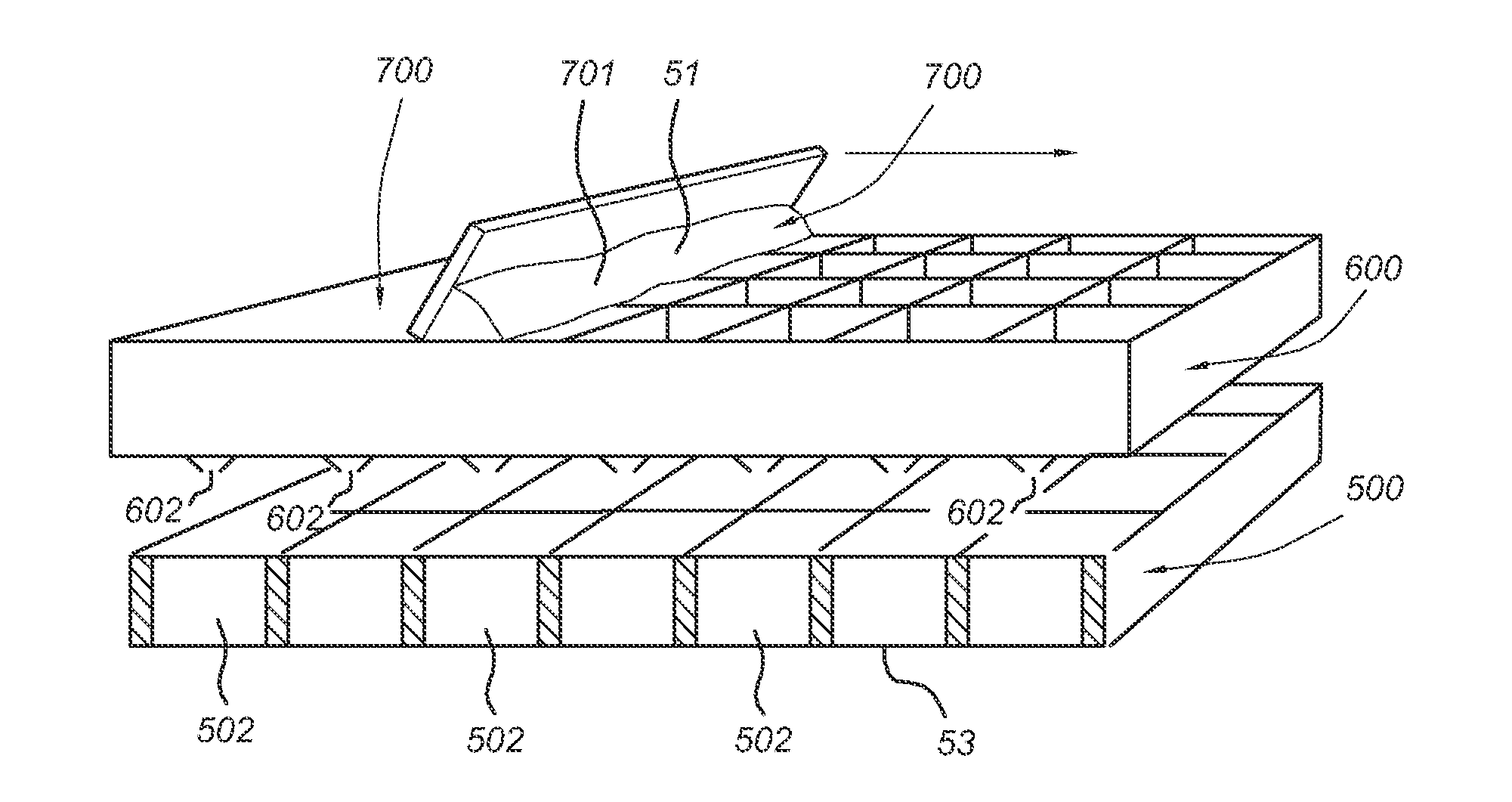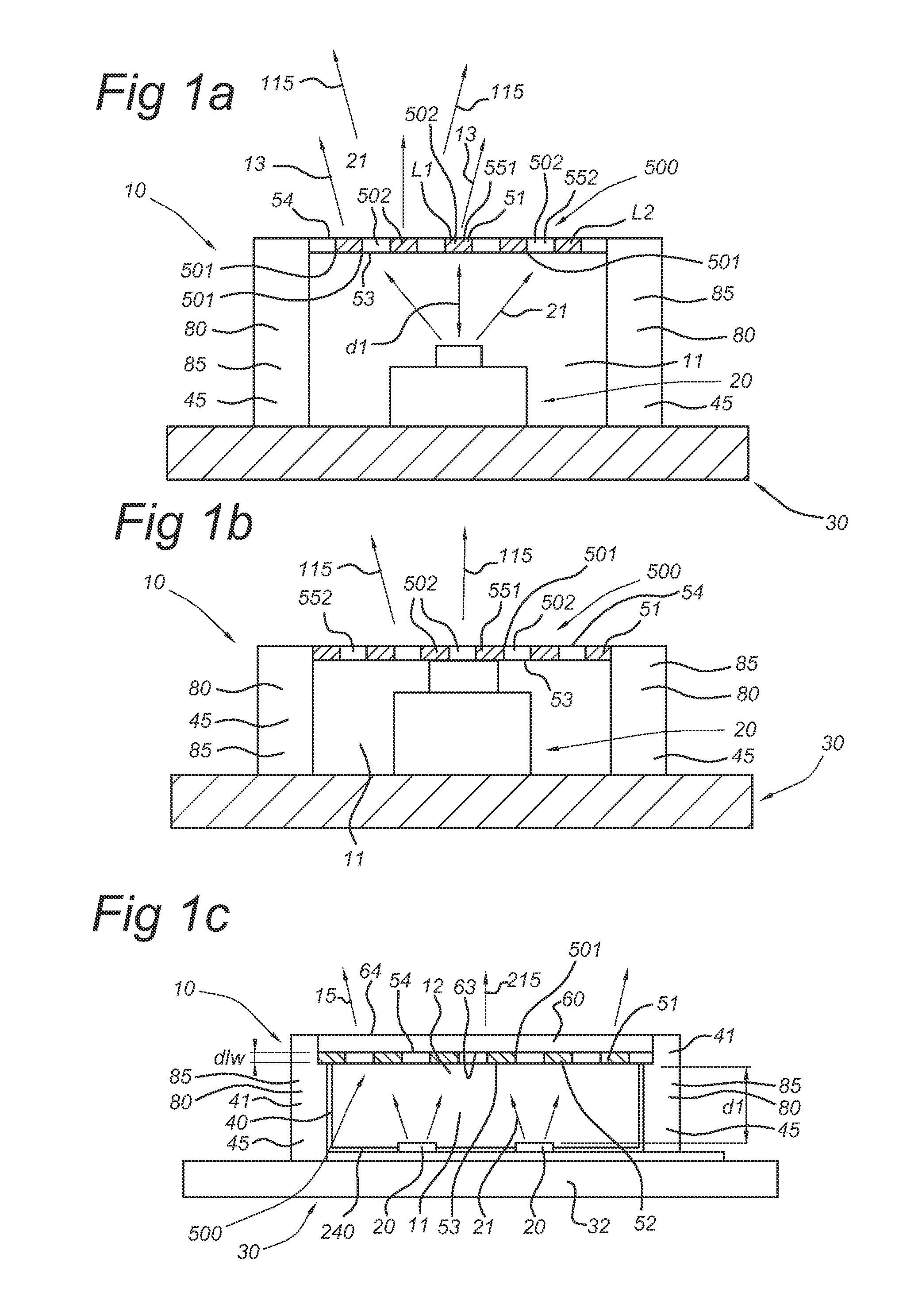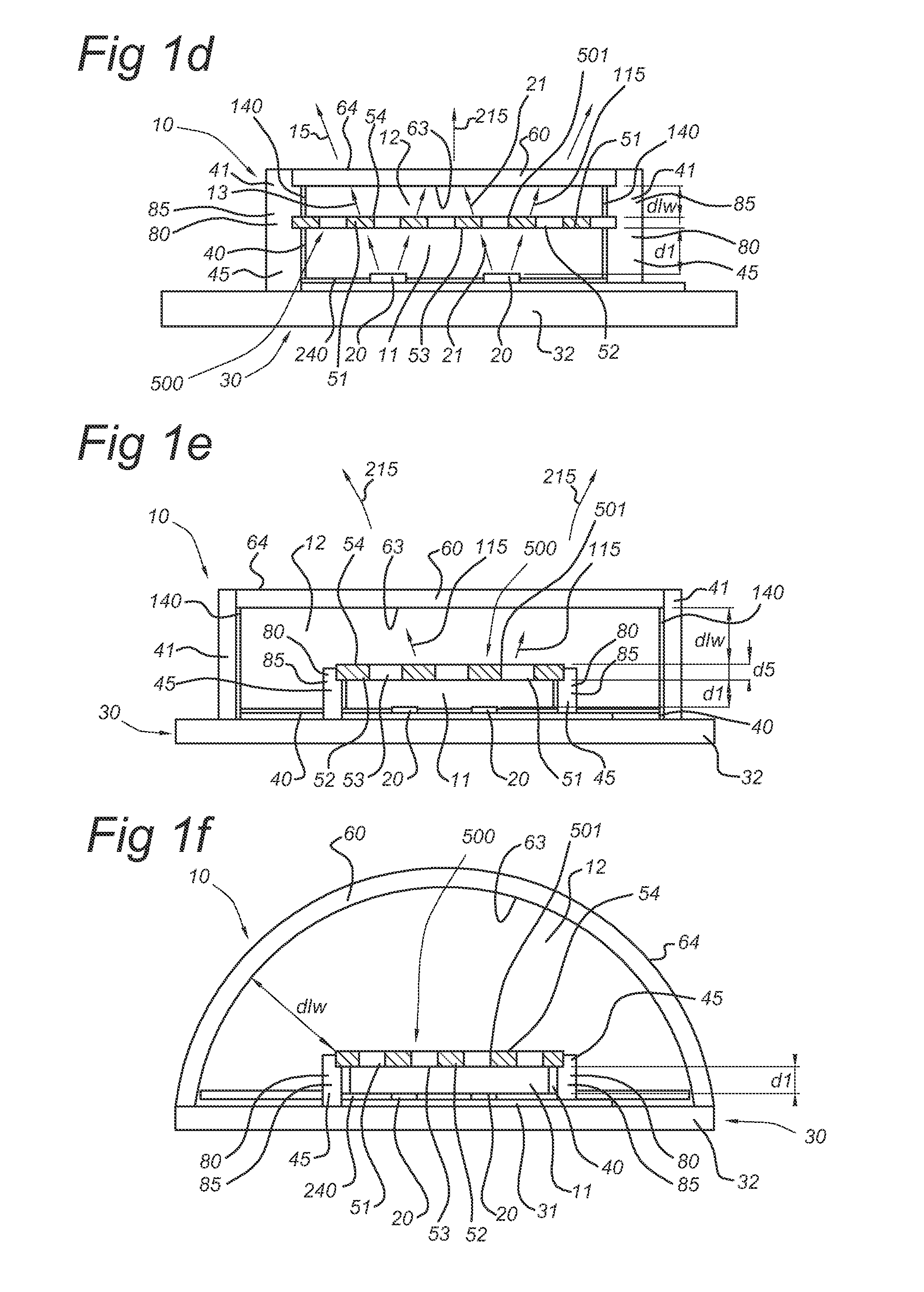Illumination device with LED with a self-supporting grid containing luminescent material and method of making the self-supporting grid
a technology of luminescent material and illumination device, which is applied in the direction of semiconductor devices for light sources, lighting and heating apparatus, coatings, etc., can solve the problems of complex structure, inability to construct high-power devices, and inability to easily dissipate heat, and achieves low “irradiation” of luminescent materials, less back reflection/reabsorption, and substantial thermal quenching
- Summary
- Abstract
- Description
- Claims
- Application Information
AI Technical Summary
Benefits of technology
Problems solved by technology
Method used
Image
Examples
example
[0114]A metal mesh (made of brass, optical transmission of 70%) was coated (impregnated) with YAG phosphor in organic binder (Neocryl). The phosphor load was 90 g / m2 (the load on the surface irradiated by the blue LEDs amounts to about 70%×90 g / m2=63 g / m2). This phosphor screen was placed on a 455 nm LED test fixture (comprising a heat sink).
An organic film with luminescent material with YAG was also placed on the same test fixture. The phosphor load of the lumifilm was also about 63 g / m2.
[0115]The lumifilm reached a peak temperature of 140° C. The phosphor-coated metal mesh however reached a peak temperature of 110° C. It is very likely that optimization of the metal mesh (the use of metal with higher thermal conductivity, f.i. copper) and optimization of the thermal contact of the metal mesh with the fixture result in even larger temperature differences.
[0116]The term “substantially” used herein, such as in “substantially all emission” or in “substantially consists”, will be under...
PUM
 Login to View More
Login to View More Abstract
Description
Claims
Application Information
 Login to View More
Login to View More - R&D
- Intellectual Property
- Life Sciences
- Materials
- Tech Scout
- Unparalleled Data Quality
- Higher Quality Content
- 60% Fewer Hallucinations
Browse by: Latest US Patents, China's latest patents, Technical Efficacy Thesaurus, Application Domain, Technology Topic, Popular Technical Reports.
© 2025 PatSnap. All rights reserved.Legal|Privacy policy|Modern Slavery Act Transparency Statement|Sitemap|About US| Contact US: help@patsnap.com



